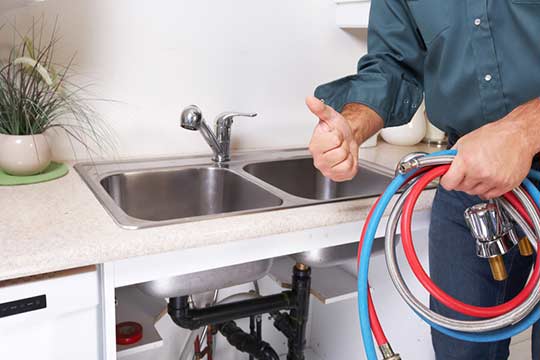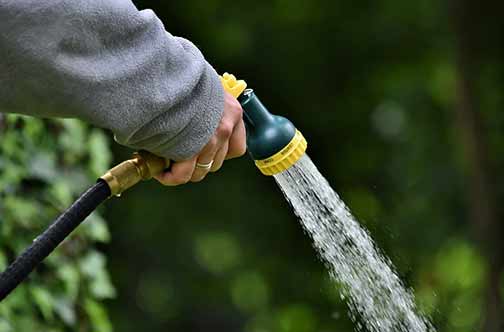Preparation for Outdoor Plumbing Systems
As the season transitions from summer to fall, taking proactive steps with your outdoor plumbing systems is essential. Inspect outdoor faucets, hoses, and sprinkler systems to ensure they are in good working condition. It is also crucial to be mindful of the potential for freezing temperatures and how they can affect your outdoor plumbing.
One of the vital steps is to disconnect and drain garden hoses to prevent them from bursting due to any remaining water freezing. Emptying water from hoses ensures there is no pressure that could cause damage. Additionally, consider using a hose bib cover to provide an extra layer of protection against freezing temperatures for your outdoor faucets.
Evaluate your sprinkler system by scheduling a professional inspection before winterizing. Ensure that all components of the system are in proper working order. Blowing out the sprinkler lines with an air compressor is a crucial step to remove any trapped water. This prevents freezing and potential damage to underground pipes.
Maintaining Indoor Plumbing Efficiency
The transition from summer to fall is a great time to evaluate and maintain the efficiency of your indoor plumbing systems. Begin with a thorough inspection of your plumbing fixtures, such as faucets and toilets, to check for any leaks or drips. Addressing these issues promptly can prevent water waste and higher utility bills.
Pay special attention to your water heater. Since the fall season often brings cooler temperatures, ensuring your water heater is operating efficiently is crucial. Flush the water heater tank to remove any sediment buildup that may have accumulated during the summer. A well-maintained water heater not only provides consistent hot water but also extends the life of the appliance.
Don’t forget to inspect your home’s main water shut-off valve. This valve is integral for preventing water damage in case of a leak or burst pipe emergency. Ensure it is working properly and known to all household members for quick access during an emergency.
Preventing Frozen Pipes
Frozen pipes are a common concern during the colder months. To prevent this issue, start by insulating exposed pipes in unheated areas of your home, such as the basement, garage, or crawl spaces. Use pipe insulation or heat tape to provide added protection against extreme temperatures.
During particularly cold nights, it is advisable to keep your home’s thermostat at a consistent temperature, even overnight. Allowing a slow trickle of water to run through taps can also help prevent pipes from freezing. While this might seem wasteful, it is far more cost-effective than dealing with a burst pipe emergency and the subsequent water damage it can cause.
Safeguarding Your Sump Pump
Fall is an ideal time to ensure your sump pump is in good working condition. This device plays a critical role in preventing basement flooding, especially during the wetter months. Test the sump pump by pouring a bucket of water into the sump pit. The pump should activate and remove the water efficiently.
Clean the sump pump and the pit to remove any debris that may have accumulated. Check the discharge pipe to ensure it is clear and directing water away from your home’s foundation. Regular maintenance of your sump pump can prevent unexpected failures during heavy rainfall or snowmelt.
Inspecting Gutter and Downspout Systems
Gutters and downspouts are vital components of your home’s overall plumbing system. They direct rainwater away from your home, preventing water damage to your roofing, siding, and foundation. As the leaves begin to fall, clogged gutters become a common issue.
Clean your gutters thoroughly to remove leaves, twigs, and other debris. Inspect the entire gutter system for any signs of damage or blockages. Ensure that the downspouts are directing water at least six feet away from your home’s foundation. If necessary, consider installing gutter guards to minimize future debris buildup and reduce maintenance efforts.

Clean your gutters thoroughly to remove leaves, twigs, and other debris. Inspect the entire gutter system for any signs of damage or blockages.
Seasonal Plumbing Maintenance Schedule
Creating a seasonal plumbing maintenance schedule can help you keep your plumbing system in top shape all year round. Include tasks such as inspecting and insulating pipes, checking for leaks, and servicing your water heater. Doing so can help you address minor issues before they become major problems, providing peace of mind and preserving the longevity of your plumbing system.
Regular maintenance checks will also help you prepare for seasonal changes proactively. By staying on top of these tasks, you can ensure that your home’s plumbing system is well-equipped to handle the demands of each season, reducing the risk of unexpected repairs and costly damage.
Professional Plumbing Inspection and Services
While many plumbing maintenance tasks can be performed by homeowners, engaging professional services for a comprehensive inspection and maintenance is advisable. Professional plumbers possess the expertise and tools to identify potential issues that might go unnoticed and provide effective solutions to prevent future problems.
Consider scheduling a professional plumbing inspection at least once a year, preferably during the fall. This ensures that your home is ready for the winter months, and any necessary repairs or improvements can be made ahead of time. A professional plumber can also provide valuable tips and recommendations to optimize your plumbing system’s efficiency.
Preparing for the Unexpected
Despite our best efforts, unexpected plumbing issues can arise. It’s important to be prepared and have a plan in place. Familiarize yourself with emergency plumbing tools such as a plunger, pipe wrench, and plumbing snake. Knowing how to use these tools can help you address minor issues before professional help arrives.
Additionally, keep the contact information of a reliable local plumber handy. In case of a plumbing emergency, having quick access to professional assistance can prevent extensive damage and costly repairs. Being prepared for the unexpected can save you time, money, and stress in the long run.
Water Conservation Practices
Incorporating water conservation practices into your daily routine not only benefits the environment but also reduces the strain on your plumbing system. Simple steps such as fixing leaks promptly, using water-efficient fixtures, and being mindful of water usage can make a significant difference.
Install low-flow showerheads and faucets, and consider upgrading to high-efficiency toilets. These small changes can lead to substantial water savings and lower utility bills. Additionally, educate your household members on the importance of water conservation and encourage them to adopt water-saving habits.
Conclusion
Ensuring your home’s plumbing system is prepared for the seasonal shift from summer to fall is essential. By taking proactive steps, such as maintaining outdoor and indoor plumbing systems, preventing frozen pipes, safeguarding your sump pump, and inspecting gutters, you can create a smooth transition and avoid costly repairs. Regular maintenance, professional inspections, and water conservation practices contribute to the overall efficiency and longevity of your plumbing system. Being prepared for the unexpected and having a plan in place can save you from potential headaches and ensure your home remains comfortable and functional throughout the fall season and beyond.


